The best varieties of cabbage for open ground with a description
Content
Early varieties
White-headed cabbage - one of the most important vegetable crops also because, due to the different ripening times, it is eaten fresh throughout the year. All its varieties (early, mid-season, late) have an independent value. To the one who is going to cultivate in his garden cabbage, you need to know what it is the best varieties for open ground.
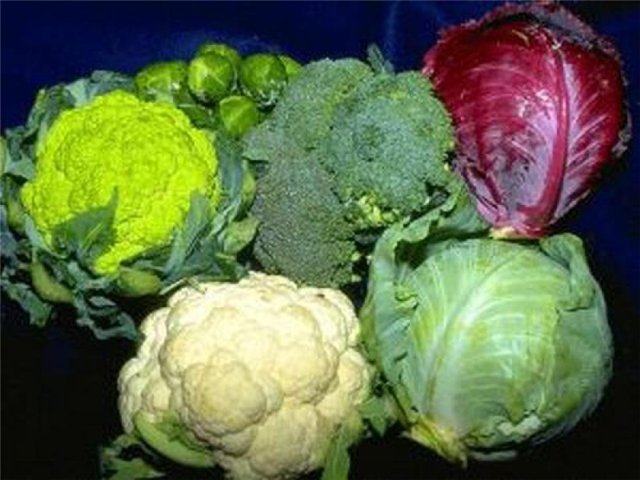
Used in salads, soups. Not suitable for fermentation. Among them, the most highly productive
Early cabbage can be harvested from the beginning of June. A good and high-quality vegetable is obtained if it is correct: they choose varieties, a plot for culture, prepare seeds for sowing (calibration, pelleting, dressing), grow seedlings, temper them in a timely manner and plant them in open ground, use fertilizers and plant protection products.
Usually seeds of early cabbage are sown indoors in early February at the rate of 8-10 g / m2, width between rows 4-5 cm, pit depth up to one centimeter. Plants dive at the stage of the first true leaf in seed boxes or in a greenhouse in a container with peat with a diameter of 6x6 cm. Hardened seedlings (55-60 days old, with 5-6 leaves) are planted in open ground. For this the best terms: end of March-beginning of April.

To obtain a harvest at an earlier date, the plants are planted under a film. This speeds up the maturation of the heads by about 15 days. Seedlings are planted in wide rows, between which 45-65 cm, between plants in a row 35-40 cm, to a depth of the first true leaf. Care must be taken not to damage the sprout core.
They take care of the plants in the future, feeding them in a timely manner with organic fertilizers (manure diluted with water 1: 5, bird droppings - 1:10) or ammonium nitrate (for 10 liters of water 25-30 g) - they begin five to six days after planting. Approximately 0.5-0.9 liters of working solution goes to one plant. Every 7-10 days, the aisles are fluffed to a depth of 8 cm, if necessary, they are watered, then they fight pests and diseases, and also destroy weeds.
They are fed once or twice, depending on how much the soil is enriched with nutrients, watered 1-7 times (depending on the weather): in the first growing season, 1 sq. M. - 25-30 liters of water, in the second - 35-40 liters. Plants are huddled before the formation of cabbage heads - due to this, an additional root system is formed, and their resistance increases. Harvest selectively when cabbage reaches approximately one kilogram in weight. Cut off hard heads with 2-3 integumentary sheets.
Mid-season varieties
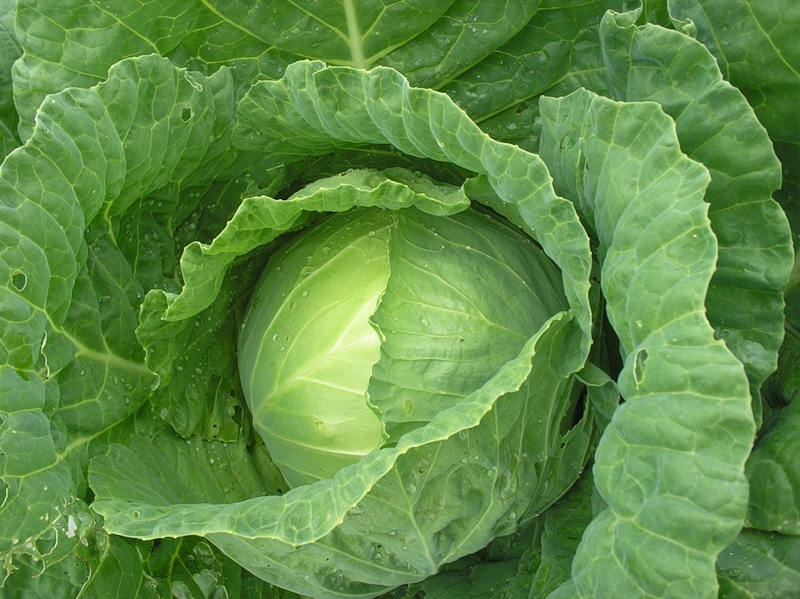
Mid-season cabbage is harvested in late July and early September. Use these varieties mostly fresh and after cooking, they are suitable for fermentation. The best mid-season varieties: Gift, Stolichnaya, Slava 1305, Braunschweit, Belorusskaya 455; hybrids: Hermes, Haniball, Megaton.Seedlings with open the soil is planted in a permanent place immediately after harvesting the early cabbage and at the same time as the late one (May 15-June 20, depending on the region).
Some of the seedlings of these varieties are usually grown indoors, while others are grown outdoors, in special nurseries. Mid-season plants varieties (age 50 days) are planted in a permanent place according to the scheme 65-70 cm x 45-50 cm, to a depth of the first true leaf, in the afternoon, if necessary, watered (up to 0.5 liters of water per plant). After 5-7 days, they check whether they have taken root. To provide the soil with a sufficient amount of moisture, the filled holes after irrigation are sprinkled with dry soil, peat, etc. In the future, they take care of the mid-ripening cabbage in the same way as for the early one. The harvest of mid-season cabbage is harvested when dense heads weigh on average 3-5 kg, always with two or three coverslips. Plant residues are immediately removed from the garden bed, using them for animal feeding or on compost.
Video "Growing Cabbage"
Late varieties
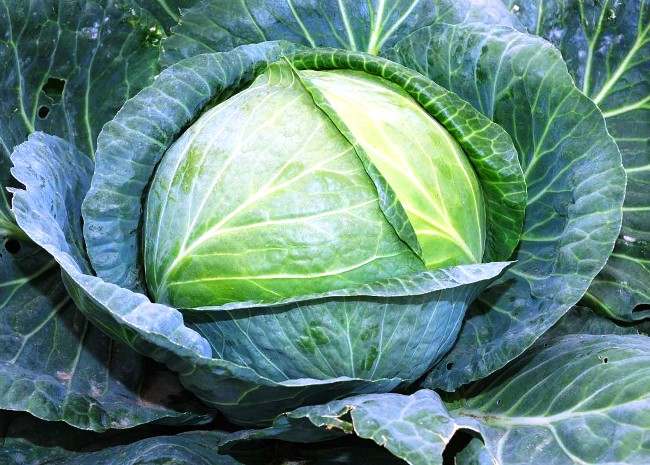
The group of late cabbage varieties is one of the most common and occupies up to 80% of the area allocated for this crop. It is the late cabbage provides the population with fresh and processed products in the autumn-winter and spring periods.
The highest yields are varieties: Moscow Late, Blizzard, Geneva, Sugarloaf, Kamenka, Snow White, Khalifa, Turquoise plus; hybrids: Extra, Aros, Amager, Bartolo.
Late cabbage is grown by seedling and sowing seeds. The correct choice of varieties, timing of sowing or planting seedlings in the ground is important in increasing the productivity and shelf life of a vegetable. If seeds are sown or seedlings are planted too early, cabbage heads may crack at the end of the growing season, impairing storage and marketability.
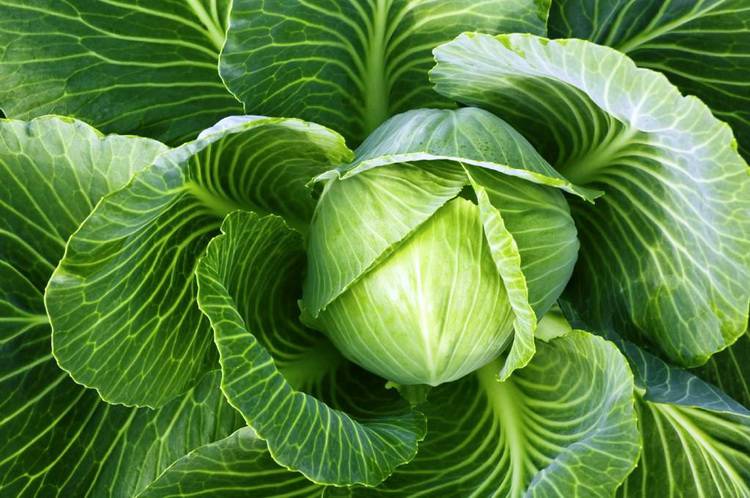
For planting seedlings the best terms - the last decade of May - the first half of June (in the southern regions - the second decade of June), and for sowing seeds - the end of April. Seedlings, which are 40-45 days old (5-6 true leaves), are planted in a permanent place with a row spacing of 55-90 cm and a distance between plants in a row of 45-60 cm. To a depth of 6-7 cm (up to the first leaf). Water if necessary. Overgrown and damaged seedlings should not be used.
During the growing season cabbage up to two times fed with nitrogen fertilizers, organic fertilizers are applied to the site (and part of phosphorus-potassium
Late varieties, through sowing seeds, are grown on weed-free soils. Before this, fluff is performed soil and level its surface. Sow according to the scheme of planting seedlings. 4-6 seeds are placed in the nest to a depth of 1-2 cm. Sprinkle with humus or peat on top, which contributes to their good germination. The emerging seedlings are treated with pesticides. A day or two late with processing can lead to the death of plants. At the stage of 2-3 true leaves, the plants are thinned out - they are left in the nest the best (up to 4). In the phase of 6 true sheets, thin out again, leaving the strongest. They take care of the same as for seedlings. At the beginning of the growing season, plants are watered at the rate of 300-400 liters of water per 10 square meters. area, and during the period of active growth - 500 liters per 10 square meters.
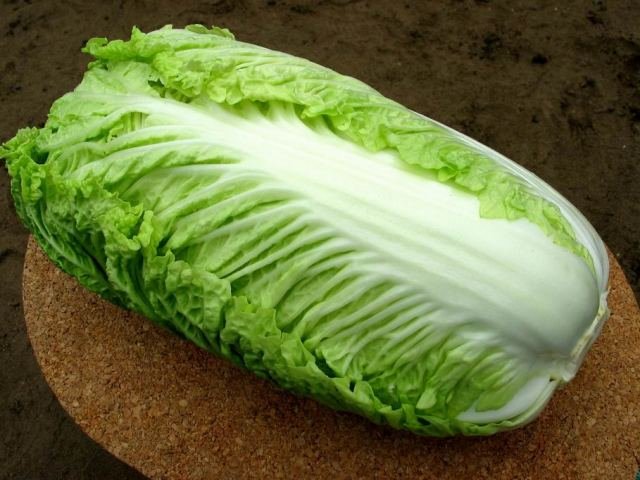
Late cabbage well tolerates temperatures up to minus five to six degrees. However, storage heads must be assembled prior to freezing, preferably in one go. Watering is stopped 15-20 days before that - this prevents head cracking and improves storage of the vegetable.If you are late with harvesting, the heads may freeze and will not be well stored. Undamaged dense heads of cabbage are selected for storage, leaving on them up to five integumentary leaves and an outer head of cabbage up to three centimeters long. Stores well cabbage, uprooted from the ground.
Store late varieties in trenches, special storage facilities at -1 + 1 degrees and relative humidity 90-95%. There must be ventilation in the room. The selection of the best varieties of white cabbage, the optimal time for planting seedlings or sowing seeds, proper care of the plants ensure the conveyor supply of the vegetable to the table.
Video "Terms and features of planting Chinese cabbage"
These varieties are best suited for growing in Russia. How to choose the best look - you will learn from the video.
